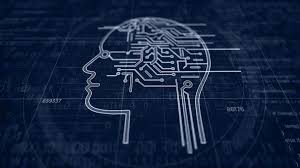Source: analyticsinsight.net
Deep learning is an imitation of actual human brain neurons and its functions.
Unlike any other time, the past decade has seen unprecedented development in the field of Artificial Intelligence (AI). There are a lot of talks on machine learning doing things humans currently do in our workplace. Deep learning is leading in some of the fronts of machine learning making practical changes.
Deep learning is an artificial intelligence function that imitates the working of the human brain in processing data and creating patterns for use in decision making. Deep learning is a subfield of machine learning concerned with algorithms inspired by the structure and function of the brain called artificial neural network (ANN). It has networks capable of learning unsupervised or unstructured data. Deep learning is often known as deep neural learning or deep neural network.
Deep learning is often compared with the actual human brain functions. The human brain can recognise a friend’s face or his/her voice even after a long gap. We can find our mother among so many people in a crowded marketplace. The human brain has learned to execute complex day-to-day activities. The functioning system behind the mechanism is 100 billion cells called neurons. The neurons build massive parallel and distributed networks, through which humans learn to carry out complex activities. The deep learning system is an inspiration of a biological neural system. Scientists and researchers started building artificial neural networks so that computers could eventually learn and exhibit intelligence like humans.
There are two types of neural network models used in deep learning,
- Convolutional Neural Network (CNN)- used in image-related applications like autonomous driving and robot vision.
- Recurrent Neural Network (RNN)- used in most of the Natural Language Processing (NLP) based text or voice applications such as chatbots, virtual assistants.
Functions of deep learning
Deep learning brings about an explosion of data in all forms and from across the globe. This large set of data, called big data, is collected from users interface in social media, internet search engines, e-commerce platforms, etc. This enormous data is considered as a data asset when it holds the details of an organisation or a company. Big data can be shared through applications like cloud computing.
Big data is mostly unstructured and contains files from diverse kind of sources like video, images and documents. It is so vast that it could take decades for humans to comprehend it and extract relevant information. Using AI and its applications, organisations make use of the data to increase their revenue and better the working system. Here are some of the use cases of deep learning at work.
Self-driving technology: Self-driving technology is one of the most important prospects that researchers are trying to unravel in the upcoming years. Automotive researchers are using deep learning to automatically detect objects such as stop signs and traffic lights. In order to decrease accidents, deep learning helps detect pedestrians in the road.
Aerospace and defence: Defence needs constant navigation. It will be very good if the navigation system is able to detect safe and unsafe zones from a long distance. Deep learning installed in satellites helps identify objects and locate areas of interest.
Medical Research: Deep learning is a major component in detecting cancer cells. Cancer researchers at UCLA have built an advanced microscope that yields a high-dimensional at a set used to train a deep learning application to accurately identify cancer cells.
Industry automation: Deep learning in industries is used to automatically find unsafe machines and alarms people to get away from the location. It ensures the security of workers in heavily machinery surroundings.
Required tools
Deep learning mandates a lot of sophisticated tools in which some are free like TensorFlow, PyTorch and Keras. Whereas, some other tools are highly expensive. Data learning deals with enormous data and complex algorithms that needs luxurious hardware infrastructure to handle. The deep learning tools are referred to as Machine Learning as a Service (MLaaS) solutions. Amazon AWS, Microsoft Azure and Google Cloud are some of the platforms that provide deep learning tools.
Advantages of deep learning
- In deep learning, neurons are being trained to perform conceptual tasks such as finding edges in a photo or facial features within the face.
- Deep learning over most of the other machine learning approaches keeps away the worry about trimming down the number of features used.
Disadvantages of deep learning
- Deep learning networks may require hundreds of thousands of millions of hand-labelled examples.
- In deep learning, it is very expensive to train in fast timeframes as fast players need commercial-grade GPUs.
Sometimes deep learning is taken for a ‘black box’ for its complex and extremely difficult to understand the working model.
